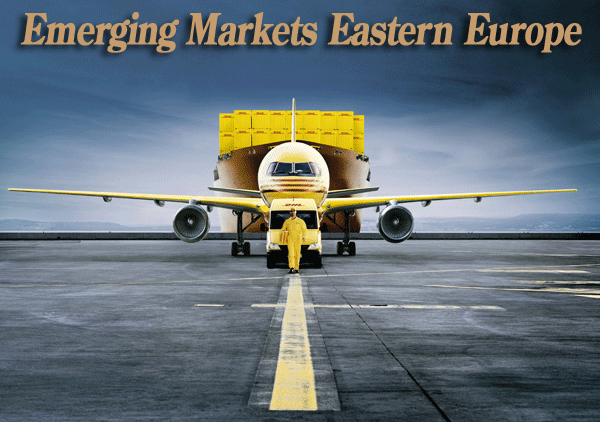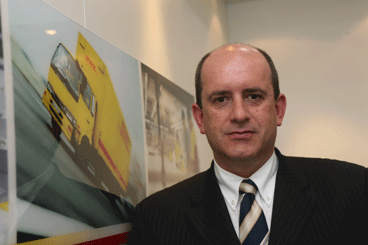
 Volker
Oesau, the CEO of DHL Global Forwarding for Central & Eastern Europe
and the country manager for Germany, spoke to Air Cargo News/FlyingTypers
about business in Eastern Europe and Russia. Volker
Oesau, the CEO of DHL Global Forwarding for Central & Eastern Europe
and the country manager for Germany, spoke to Air Cargo News/FlyingTypers
about business in Eastern Europe and Russia.
FT: How will DHL’s
air freight business develop in Eastern Europe and Russia in the next
several years?
Volker Oesau: Our
current assumption is that the annual growth of the total Eastern European
market will amount to 7-8%. In Russia we expect similar annual growth
in import, while the growth in export will be considerably lower.
FT: How does DHL organize
its air freight business in the region, which airlines do you choose for
cooperation and which airports will be most important for the region in
the future?
Volker Oesau: We established
a dense network across the whole Eastern European area consisting of dedicated
offices that act as self-contained organizations. This gives us the exact
possibilities for future development that we are looking for. Whenever
practicable, we cooperate with our preferred carriers (such as Lufthansa,
AirFrance-KLM), and others. In addition to this, another important aspect
is to work together with the particular national carriers, if they are
able to fulfil our high equipment and network requirements. The most important
air freight hub in Russia will continue to be Moscow with its three airports
(Sheremetyevo 1 and 2 and Domodedovo).
FT: What type of air
freight businesses does DHL currently serve in Eastern Europe and how
do you foresee future development?
Volker Oesau: At present,
our main focus is mainly put on the pharmaceutical, high tech and automotive
industry as well as oil and gas. Apart from our standard air freight products,
the project and charter businesses are important additional areas. To
ensure smooth and fast transportation, we use both direct services as
well as gateways such as Frankfurt, Amsterdam or Vienna.
FT: Are there any
other regional particularities that have to be taken into account regarding
the air freight business in the region?
Volker Oesau: Still,
business conditions are not ideal in Eastern Europe, as for example, infrastructure
is imperfect in many places. There are bottlenecks regarding storage areas
and offices. In some countries such as Russia and Ukraine, consolidated
shipments are still not allowed.
FT: What will change
within the next years?
Volker Oesau: The
economy in Eastern Europe will continue to grow strongly. However, future
investments will show a tendency to relocate towards the East. In 10 years,
probably even less, some countries will surely lose some of their current
attractiveness as business destinations because of rising labour costs.
Even now, the wage level in the Czech Republic already amounts to 50%
of the Austrian and 40% of the German wage level. Beyond a doubt, this
is a continuing development.
FT: What are the strategic
targets of DHL Global Forwarding in Eastern Europe?
Volker Oesau: DHL
Global Forwarding’s aim is to offer tailored customer solutions
from beginning to end of the supply chain – the same high standards
throughout the world. In the Eastern European region, this means we will
continuously expand our network in important trade places such as Russia,
Slovakia, Romania, Kazakhstan and other countries. At present, our main
focus is clearly on Russia where we will be present with nine sites altogether.
Also we continue to strengthen our presence in Eastern Slovakia and Romania.
In product development, we have two ongoing projects: First, we are implementing
our air freight product “Airfreight Plus,” a door-to-door
service with fixed transit times, in the whole Eastern European region.
And second, in the sea freight business we are currently upgrading the
frequency of our direct consolidated container services in Eastern Europe.
George Frey
|



